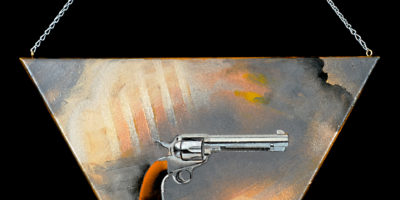California’s Jewish Girls
Scientists now tell us that people underestimate how much they will change in the future. Looking back over our lives, we recognize the dramatic shifts that have occurred — the “different people” that we were at age 10, age 22, and age 35. But looking forward, we tend to expect more of the same, forgetting all of the evidence to the contrary.
We don’t see this kind of change in Elaine Greenstein, the main character of The Tin Horse by Janice Steinberg (Random House, $12.99). Although we follow Elaine from her 1920’s girlhood in the Los Angeles Jewish neighborhood of Boyle Heights through her eighth decade, she seems to have become exactly who she set out to be, without any of life’s realistic detours and surprises. At the start, she is a bookish, argumentative girl and — staying in character — she becomes a lawyer and a “feisty octogenarian” in modern-day Los Angeles. As a girl, Elaine, always skittish about sexual adventures, looks down on the sordid L.A. nightlife that attracts her twin sister, Barbara, who runs away from the girls’ tight-knit Jewish world. The sisters’ late-in-life reunion forms the crux of the novel.
Steinberg’s story travels back and forth between present-day Los Angeles and the girls’ childhood, offering glimpses of Elaine and Barbara’s different experiences of the same family. If the novel feels old-fashioned, it is not because we’re focused on two eighty-year-old women. In fact, in the midst of our current obsession with writing frankly about the indignities of aging and our bad feelings about our necks and waistlines, Steinberg offers a refreshingly vital look at her older characters. The novel is realistic enough to include some of the aches and pains that come with this stage of life, but there are new possibilities in her characters’ lives for relationships precisely because their responsibilities and commitments have changed.
What will feel old-fashioned is the mode of Jewishness described. Instead of the ambivalence, apathy or struggle that characterizes so many characters in contemporary “Jewish novels,” The Tin Horse offers straight-up 1930’s style Jewish self-hatred: Elaine’s twin sister Barbara refuses to be trapped within the confines of a 1930’s Jewish life, and so she remakes herself as a non-Jew in order to expand her horizons.
Jews who try to pass in this way have largely dropped out of the repertoire of American Jewish novelists, but Steinberg reminds readers of the changes in Jewish experience for those whose lifetime spanned much of the twentieth century. Interactions even between Jews were greatly influenced by anti-Semitism, Steinberg shows, as her Jewish characters size up each new Jew with an eye to how the other will be perceived by the non-Jewish majority. When a relative from Romania comes to live with the family in the 1930’s, Elaine and Barbara can barely conceal their disdain for the furtive, Yiddish-speaking boy who seems nothing like their California classmates. Later in life, Elaine reflects, “I knew that the qualities in Ivan that made Barbara’s skin crawl — and which, I admit, I found distasteful — were survival skills that came from his being born in a rotten place at a horrific time.”
What change we do find in The Tin Horse is in the characters’ growing comfort with Jewishness. As the sisters look back on their unease in their younger Jewish skins, they realize what different people they were. The reader, at least, feels some excitement for the new lives that await them.
Rachel Gordan is a postdoctoral fellow in American Judaism at Northwestern University.


